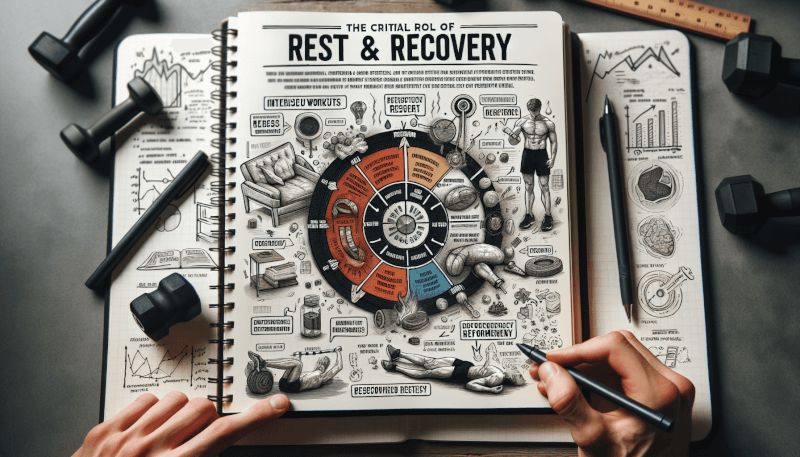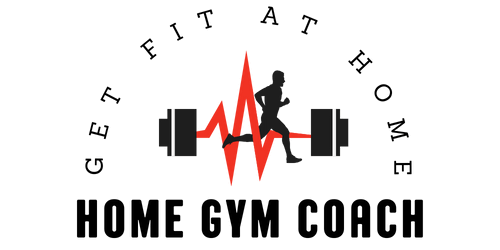In your pursuit to achieve your fitness goals, it’s easy to get caught up in the intense workouts and overlook the importance of rest and recovery. However, incorporating rest and recovery into your custom workout plans is crucial for maximizing your results and overall well-being. Not only does it give your muscles time to repair and grow stronger, but it also helps prevent injuries, reduces fatigue, and improves mental focus. So, whether you’re a seasoned athlete or just starting your fitness journey, make sure you prioritize rest and recovery to optimize your progress and performance.

Better Performance
Rest and recovery play a crucial role in achieving better performance in your workouts. When you engage in intense exercise, your muscles experience microscopic damage. Rest days allow for muscle repair and growth, as the body replenishes energy stores and rebuilds damaged tissues. Without sufficient recovery time, your muscles may not have the opportunity to repair themselves properly, leading to decreased performance and potential injury.
Overtraining is a real risk, especially for those who are highly motivated and dedicated to their fitness goals. By incorporating rest days into your workout plan, you reduce the risk of overtraining. Overtraining occurs when the demands placed on the body exceed its ability to recover. Symptoms of overtraining include fatigue, decreased performance, and increased susceptibility to illness. Rest days allow your body to catch up, repair, and adapt to the stress of exercise.
Rest and recovery not only benefit your muscles, but they also have a positive impact on your overall performance. When you allow your body time to recover, you give your central nervous system the opportunity to rest and recharge. This is crucial for maintaining optimal coordination, reaction time, and skill execution. By incorporating rest days into your routine, you enhance your overall performance and may find yourself surpassing previous limits.
Injury Prevention
Rest and recovery are essential for injury prevention. Engaging in intense exercise puts stress on your muscles, tendons, and ligaments. These tissues need time to heal and repair themselves adequately. By giving them the rest they need, you reduce the risk of acute and chronic injuries. Neglecting proper recovery can lead to overuse injuries and even more severe conditions that may require extended periods of rest.
Additionally, rest days allow for the recovery of your central nervous system. This is important because the nervous system can become fatigued from constant high-intensity exercise. Rest and recovery provide the necessary time for your nervous system to restore its functions, ensuring that it can continue to effectively communicate with your muscles during workouts. By taking the time to recover properly, you significantly decrease the risk of injuries caused by compromised neuromuscular control.
Enhanced Muscle Recovery
Rest and recovery play a vital role in enhancing muscle recovery. Intense exercise causes inflammation and muscle soreness as a natural response to tissue damage. Rest days allow this inflammation to decrease, enabling your muscles to heal more efficiently. Proper recovery also promotes blood flow and nutrient delivery to the muscles, aiding in the repair process. The combination of reduced inflammation, increased blood flow, and nutrient delivery results in faster muscle tissue repair and recovery.
Incorporating proper rest and recovery techniques also helps prevent muscle imbalances. These imbalances can occur from overtraining specific muscle groups while neglecting others. Rest days allow all muscle groups to recover equally, preventing imbalances and promoting overall muscular symmetry. By giving your muscles the time they need to repair and recover, you facilitate optimal muscle growth and development.
Mental Well-being
Rest and recovery have numerous benefits for your mental well-being. Engaging in regular exercise can be extremely effective in reducing stress and anxiety levels. However, without adequate rest, exercise-induced stress can accumulate, potentially leading to a negative impact on your mental health. Rest days provide a break from the physical demands of exercise and allow your body to recover from the stress it has encountered. By giving yourself time to rest, you reduce overall stress levels and promote a sense of calmness and well-being.
In addition to reducing stress, rest and recovery also play a crucial role in improving sleep quality. Physical activity can increase levels of cortisol, a stress hormone that can interfere with sleep. Rest days help regulate cortisol levels, allowing your body to relax and go into a state of restful sleep. Quality sleep is essential for optimal cognitive function, mood stability, and overall wellness. By prioritizing rest days, you can enhance your sleep quality, leading to improved mental well-being.
Taking time for rest and recovery is also a remarkable way to boost your mood and motivation. The release of endorphins during exercise produces feelings of happiness and euphoria. However, prolonged intense exercise without adequate rest can lead to the depletion of these endorphins. By incorporating rest days into your workout plan, you allow your body to replenish its endorphin levels, resulting in a sustained positive mood and increased motivation to continue pursuing your fitness goals.

Hormonal Balance
Rest and recovery are vital for maintaining hormonal balance in your body. Intense exercise can lead to increased cortisol levels, a hormone that is commonly associated with stress. While cortisol has important functions in the body, excessive levels can have negative effects, such as muscle breakdown and decreased immune function. By incorporating rest days, you give your body the opportunity to regulate cortisol levels, preventing the detrimental impact of chronically elevated levels.
A proper balance between testosterone and cortisol is crucial for muscle growth and recovery. Testosterone is a hormone that promotes muscle protein synthesis and facilitates muscle repair and growth. Rest and recovery help maintain an optimal testosterone-to-cortisol ratio, creating an environment conducive to muscle development. By incorporating rest days into your workout routine, you optimize hormonal balance, facilitating muscle growth and overall performance.
Rest and recovery also enhance the production of growth hormone (GH) in your body. GH plays a significant role in muscle recovery, repair, and growth. By allowing your body time to rest, you promote the release of GH, enhancing muscle recovery and contributing to overall fitness gains. Prioritizing rest and recovery can have a positive impact on your hormone levels, leading to improved performance and physical well-being.
Preventing Plateaus
Rest and recovery are essential for preventing plateaus in your fitness journey. When you engage in the same workouts day after day without proper recovery, your body may adapt to the stress, leading to a plateau in your progress. By incorporating rest days, you provide your body with the necessary time to adapt and recover, preventing stagnation in your training.
Rest days allow your body to adapt and progress by providing time for muscle and strength gains. During exercise, you create microscopic damage to your muscle fibers, and it is during the recovery phase that these fibers repair and become stronger. By allowing yourself adequate recovery time, you enhance the adaptive process, leading to improved muscle and strength gains over time.
By implementing rest and recovery strategies, you can break through plateaus and continue making progress in your fitness journey. Rest days are an integral part of any workout program, allowing for the necessary adaptation and recovery to occur. By incorporating regular rest days into your routine, you ensure continuous improvement and minimize the risk of training stagnation.

Long-Term Sustainability
Rest and recovery are crucial for long-term sustainability in your fitness journey. Neglecting adequate recovery can lead to burnout, overtraining, and diminishing returns in terms of progress. By incorporating rest days into your routine, you reduce the risk of burnout and overtraining, allowing for ongoing progress and improvements.
Rest and recovery promote a balanced and healthy approach to fitness. They remind us of the importance of listening to our bodies and providing them with the care they need. By prioritizing rest and recovery, you can maintain a sustainable and enjoyable fitness routine for the long term. Achieving optimal health and wellness is a lifelong journey, and rest days are an essential component of that journey.
In addition to physical sustainability, rest and recovery also contribute to mental and emotional well-being. By taking the time to rest and recover, you nurture your mental health, allowing for the maintenance of a positive mindset and a healthy relationship with fitness. Long-term sustainability requires a holistic approach that encompasses both physical and mental well-being, and rest and recovery play a crucial role in achieving this balance.
Optimal Training Schedule
Creating an optimal training schedule involves incorporating rest days strategically into your workout program. A well-designed training plan includes planned rest days to ensure proper recovery and prevent overtraining. Rest days should be organized in a way that allows for adaptation and progress while minimizing the risk of injury or burnout.
Integrating variation in the intensity and volume of your workouts is essential for optimal training. High-intensity workouts and heavy lifting should be followed by lower-intensity days or active recovery sessions to allow for muscle recovery. Alternating between different training modalities and focusing on different muscle groups can also help prevent overuse injuries and promote overall recovery.
Tailoring recovery time to individual needs is crucial for optimizing training schedules. Every individual is unique, and the amount of rest required can vary depending on factors such as fitness level, age, and training intensity. Some individuals may require more frequent rest days, while others may benefit from shorter, active recovery sessions. Listening to your body and adjusting your training schedule accordingly is key to achieving optimal recovery and performance.

Types of Rest and Recovery
Rest and recovery can take various forms, each with its own benefits and purposes. Understanding the different types of rest and recovery can help you implement the most effective strategies into your workout plan.
Active recovery involves engaging in low-intensity activities that promote blood flow and muscle relaxation without causing additional stress on the body. This can include activities such as light jogging, yoga, stretching, or swimming. Active recovery helps in reducing muscle stiffness, enhancing blood circulation, and promoting faster recovery.
Passive rest, on the other hand, involves complete rest and relaxation without engaging in any physical activities. This can include taking a day off from exercise, spending time relaxing, meditating, or engaging in hobbies that bring you joy. Passive rest allows your body and mind to fully unwind and regenerate, contributing to overall recovery.
Sleep is an essential component of rest and recovery. This is the time when your body repairs and rebuilds tissues, balances hormone levels, and consolidates learning and memory. Ensuring a sufficient amount of quality sleep is vital for optimal recovery and performance. Incorporating relaxation techniques such as deep breathing exercises, meditation, or taking warm baths before bedtime can further enhance the quality of your sleep.
Implementing Rest and Recovery Strategies
Implementing effective rest and recovery strategies is key to maximizing the benefits they offer. Here are some practical tips to help you incorporate rest and recovery into your routine:
Listen to your body’s signals: Pay attention to any signs of excessive fatigue, decreased performance, or persistent muscle soreness. These are indications that your body needs rest. If necessary, modify your training schedule to allow for additional recovery time.
Prioritize sleep and proper nutrition: Aim for 7-9 hours of quality sleep each night to support optimal recovery. Ensure you consume a well-balanced diet that provides adequate fuel for your workouts and includes essential nutrients for muscle repair and recovery.
Incorporate active recovery exercises: Engage in low-intensity activities on rest days to promote blood flow, improve flexibility, and reduce muscle soreness. This can include activities like walking, swimming, or light stretching.
Remember, rest and recovery are not signs of weakness, but rather essential components of a successful and sustainable fitness journey. By implementing rest and recovery strategies, you can optimize your physical and mental well-being, enhance your performance, and achieve long-term success in your fitness goals.



